How to Draw Trees in the Background
How to Draw Various Foliage with a Depth of Field
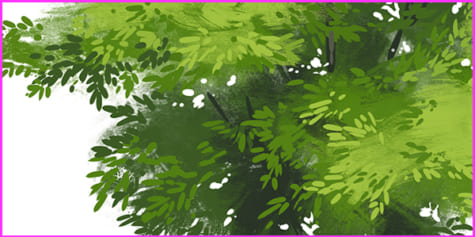
Comic artist Ann Maulina explains how to draw various foliage types, including bushes, grass, trees, and leaves placed in background layers known as depth of field.
Depth of Field
Before I show you how to draw foliage, I'd like to explain the concept of depth of field which is quite essential when drawing a background.
Here is its simple formula— foreground, midground, and background.
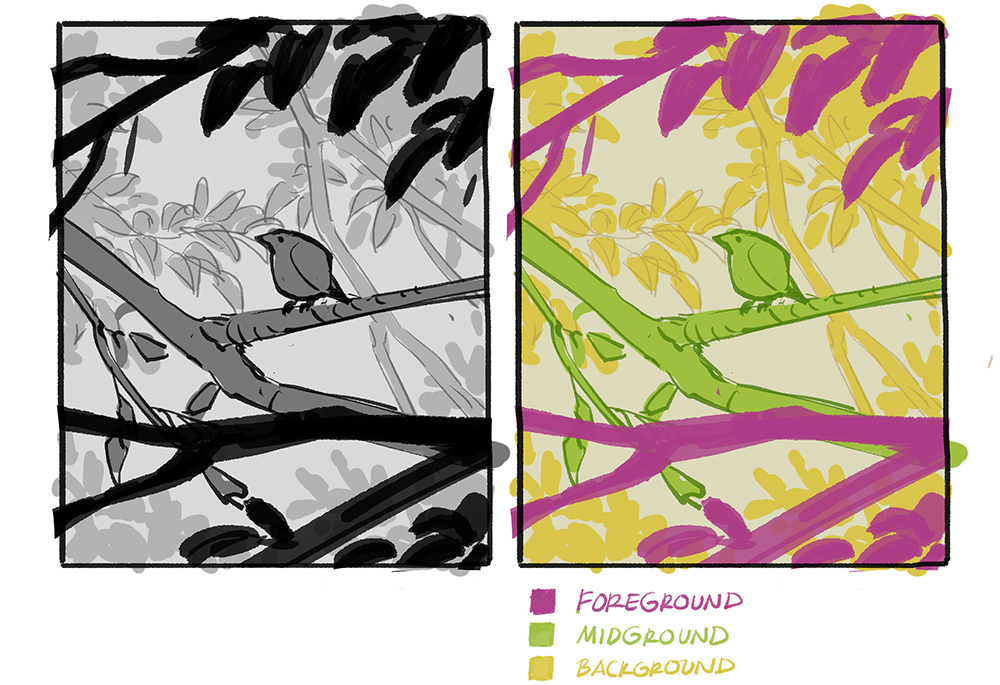
- Foreground: This contains low values, and dark colors with low intensity/saturation, and a lot of detail. On stylized drawings, the foreground is often drawn as a silhouette.
- Midground: Where the main focus of the image is. It has the highest intensity colors compare to other layers.
- Background: High value, bright with low-intensity colors. Low details.
Adding leaves by using a simple solid round brush
- At this stage, we don't have to worry about which color to use. Pick a color and paint some of the surrounding leaves. Don't spread it out too much. Make sure you can distinguish between the light lighter and darker areas.
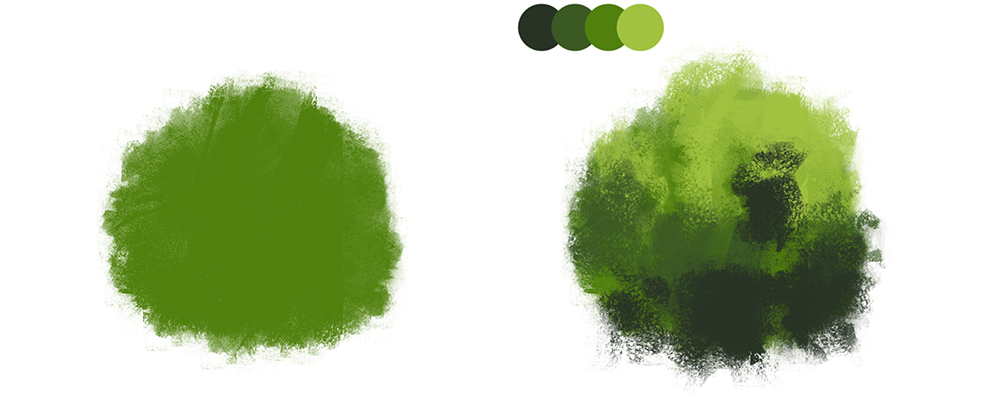
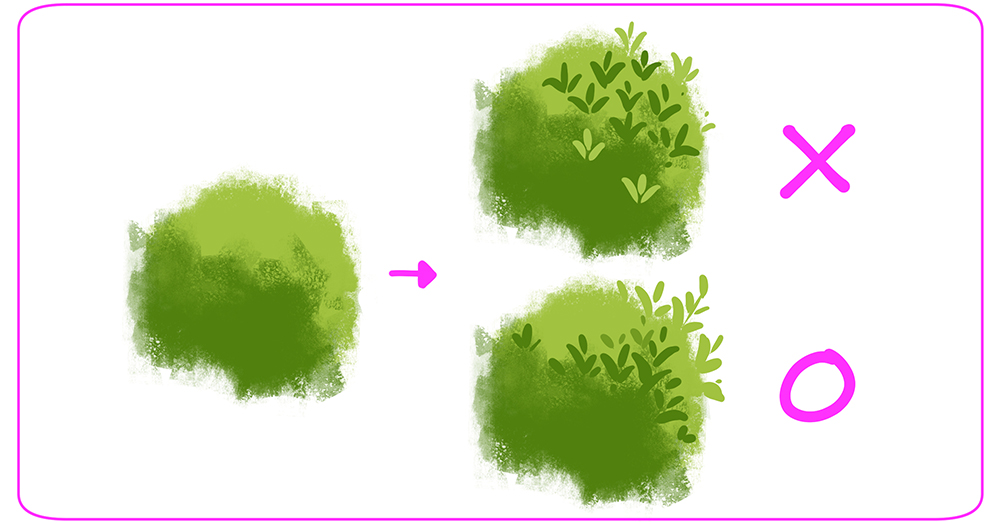
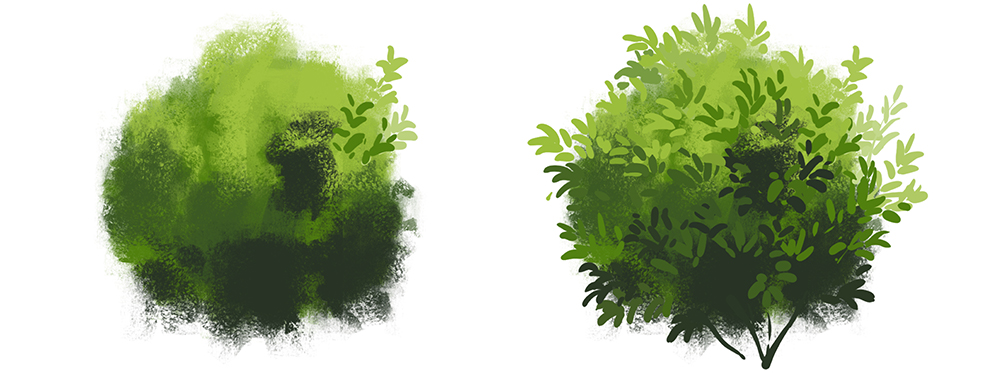
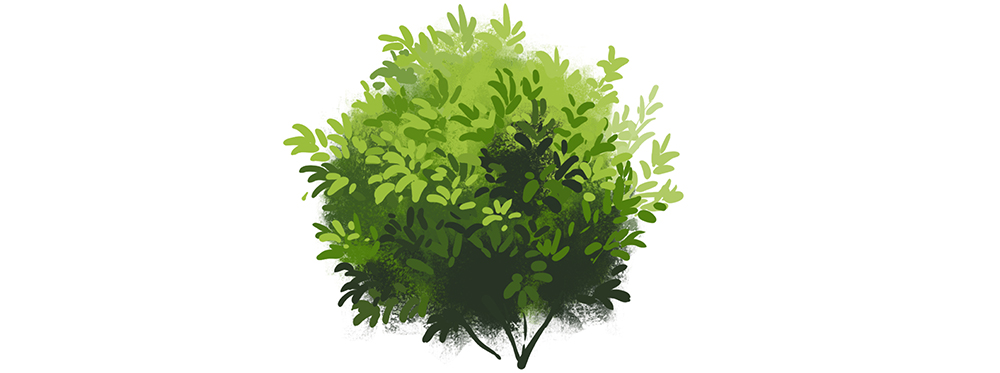
Here are some steps for drawing bushes growing in various directions from that first simple shape.
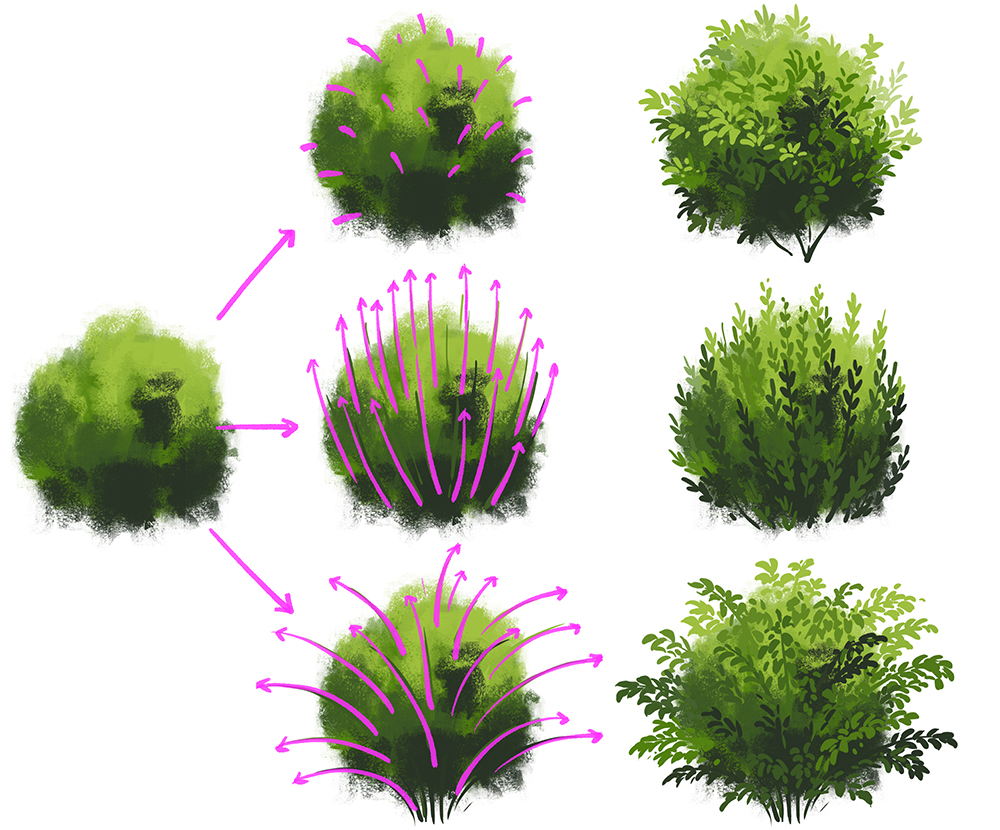
Drawing Grass
- Blend colors using a big brush.
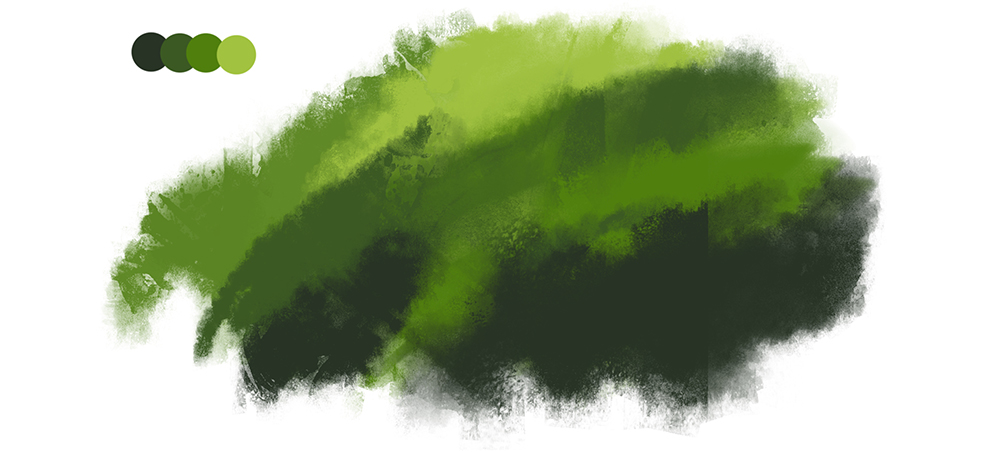
- Paint some grass with simple a brush horizontally. Just like how we draw leaves on a shrub. Use the color picker to pick the same color from the blended area and paint in the blades of grass.
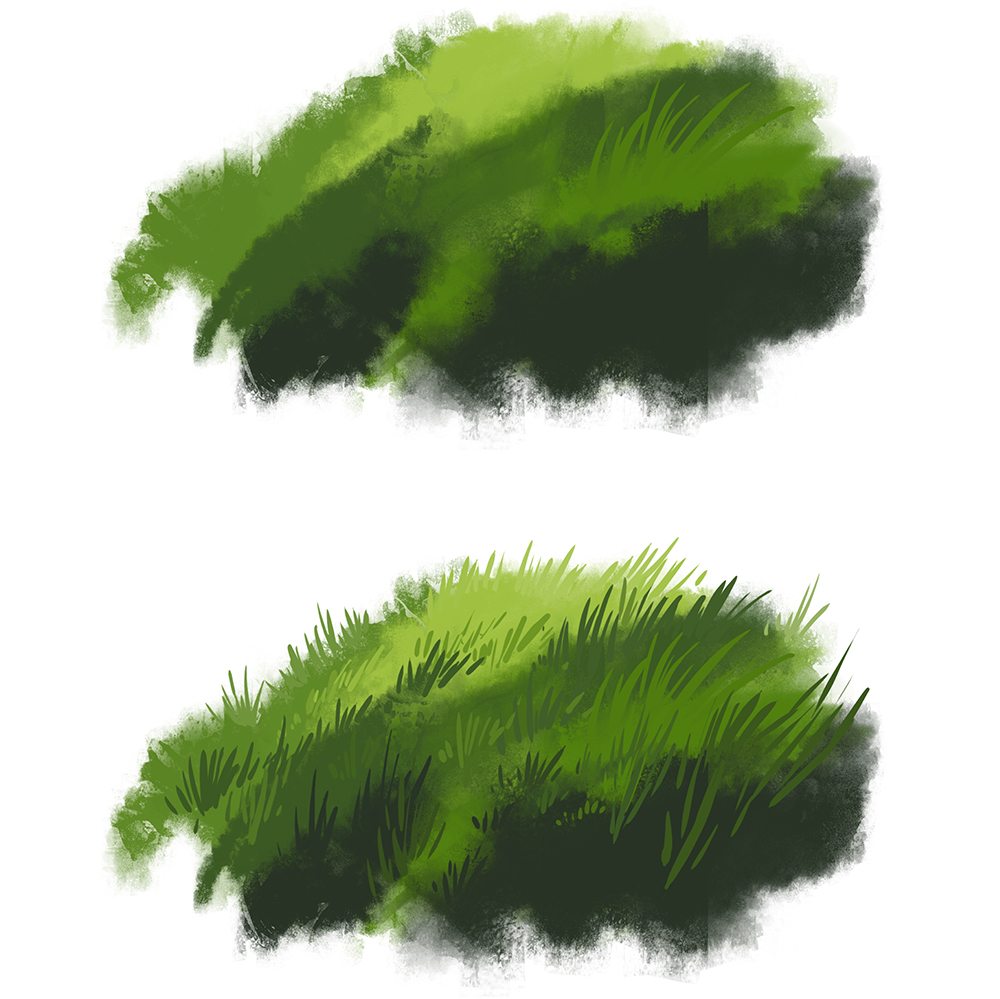
- Add some wild plants.
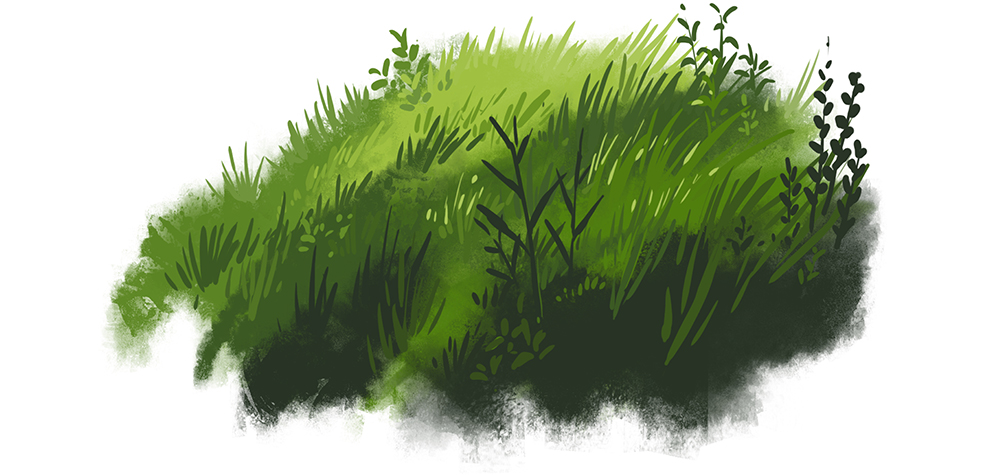
Drawing Trees
- Here are some steps to drawing various types of trees with different basic shapes.
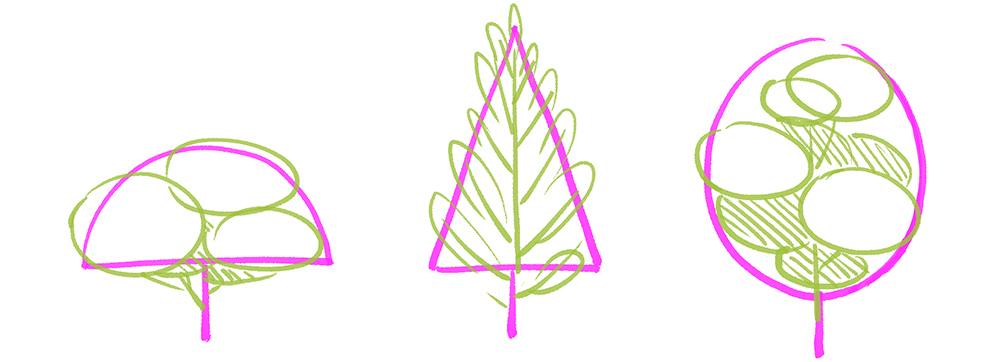
- Using the same method as drawing grass: blend colors, and then paint in clusters of foliage.
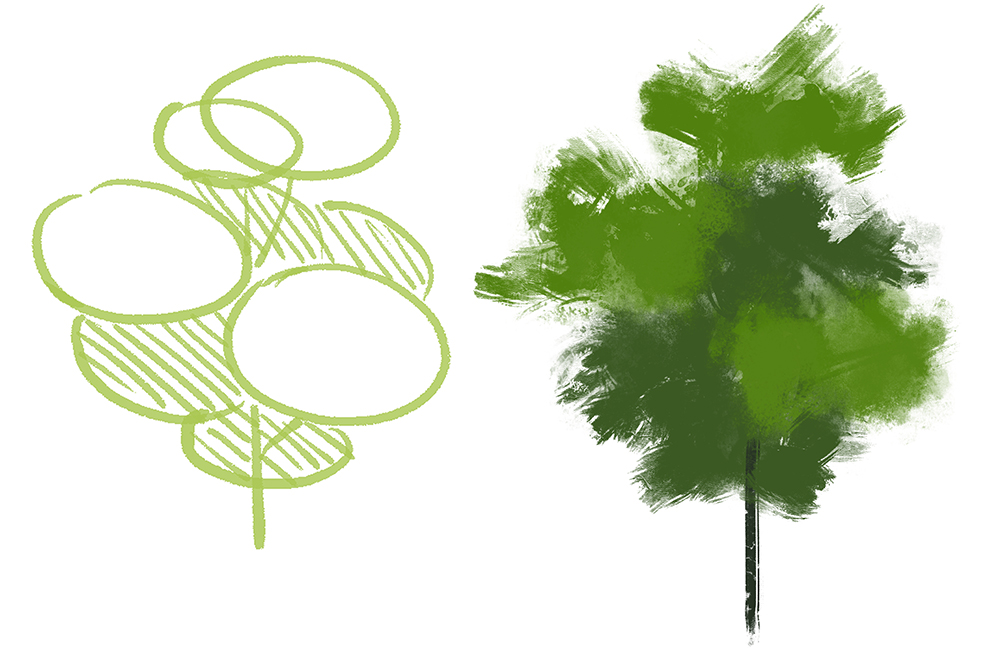
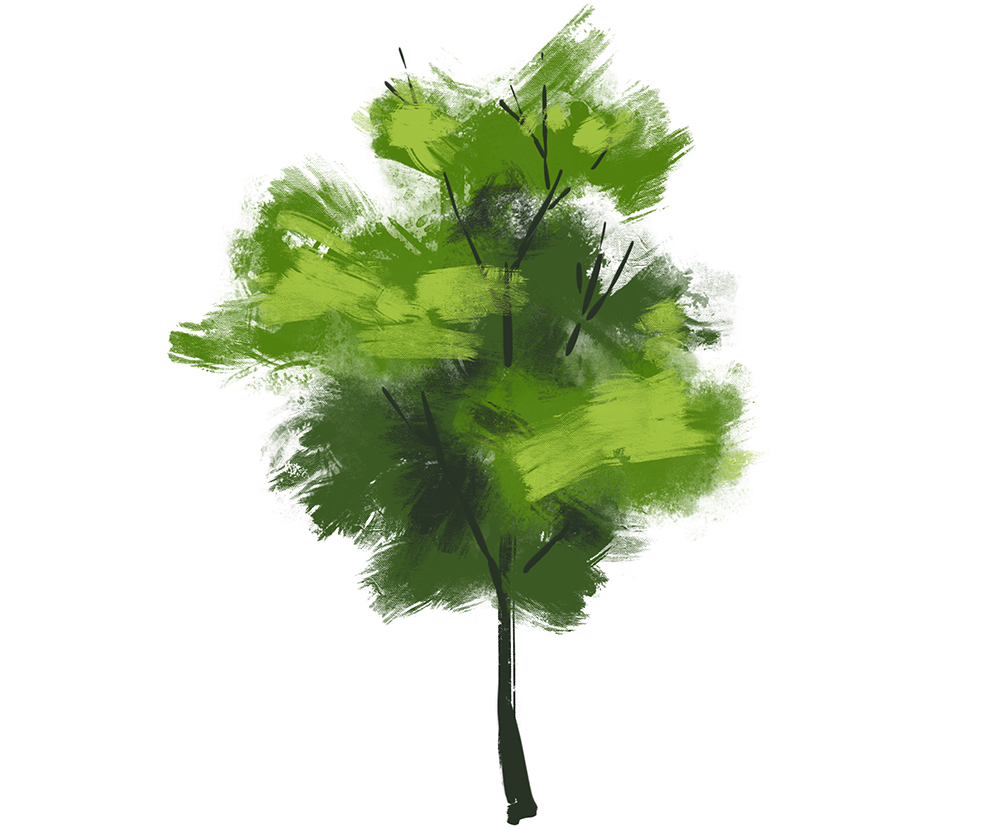
- Just like drawing a shrub, it is better to use directions as a guide.
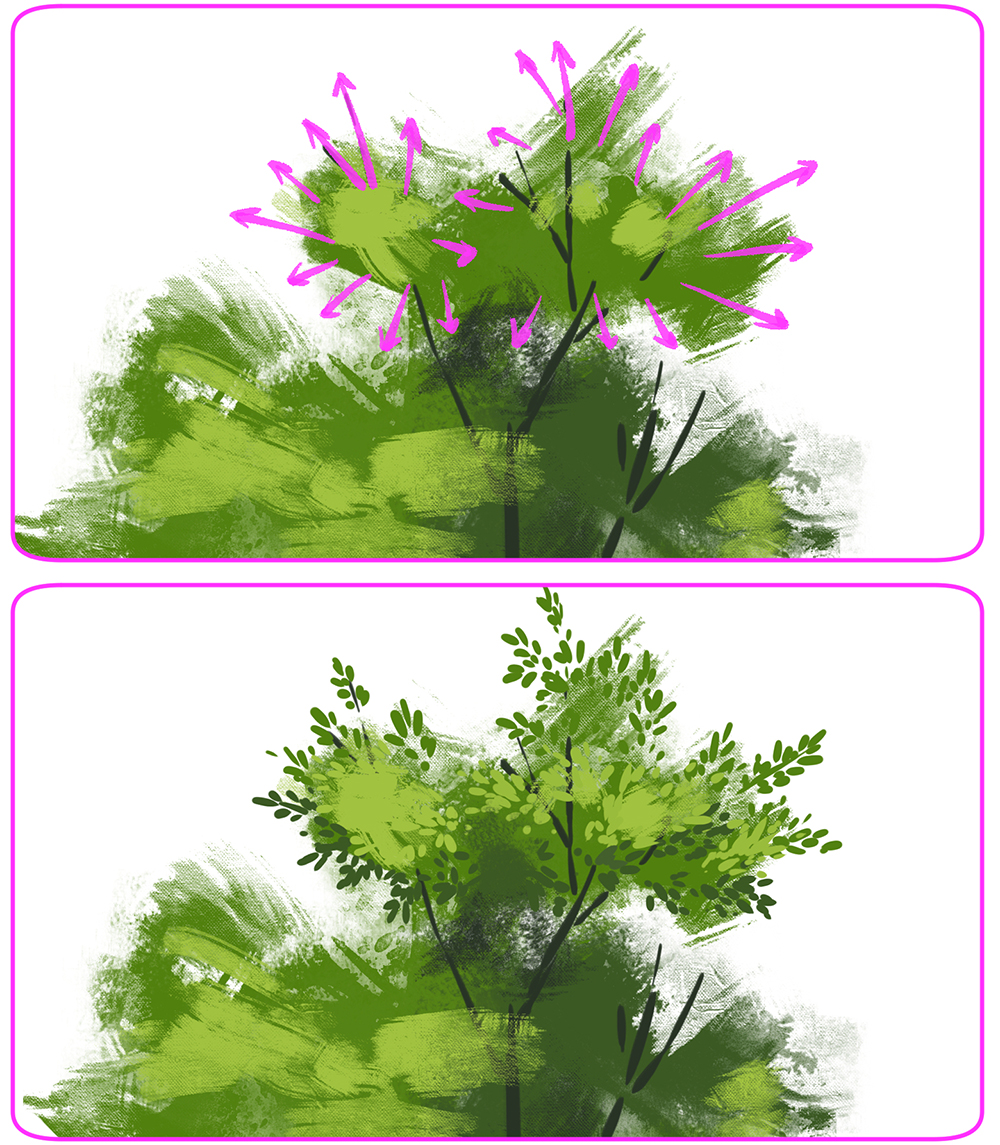
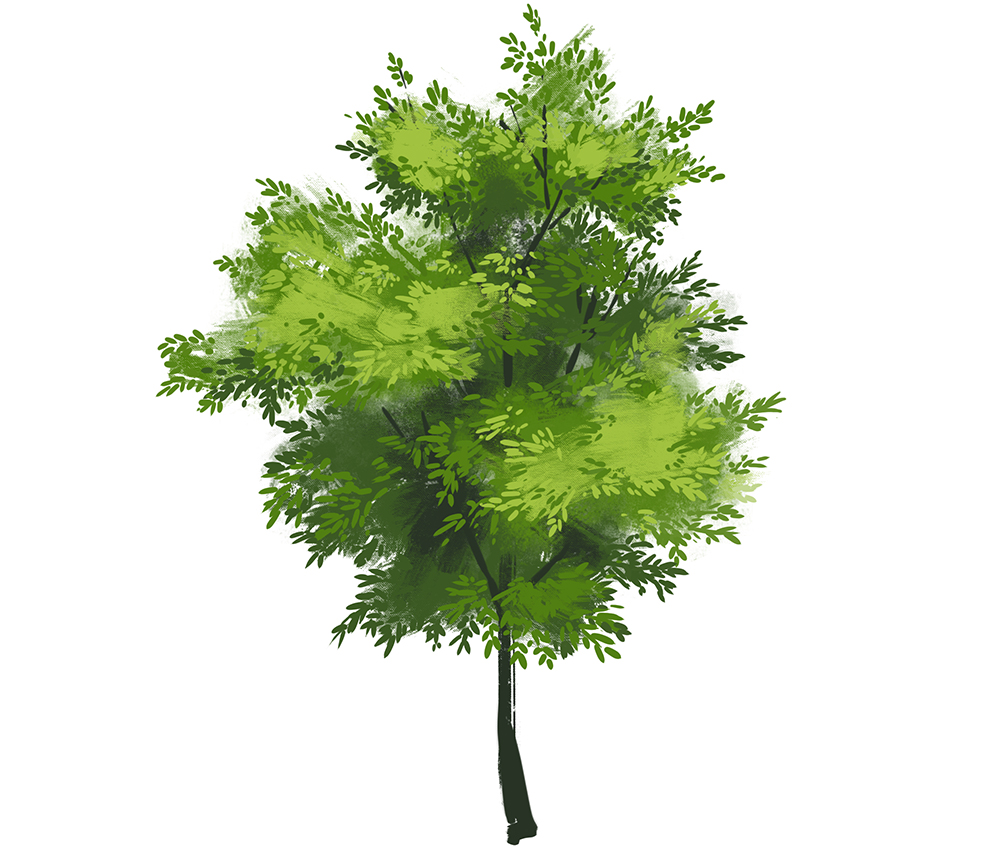
- Add details. I made some holes between leaf clusters and added another color onto the trunk.
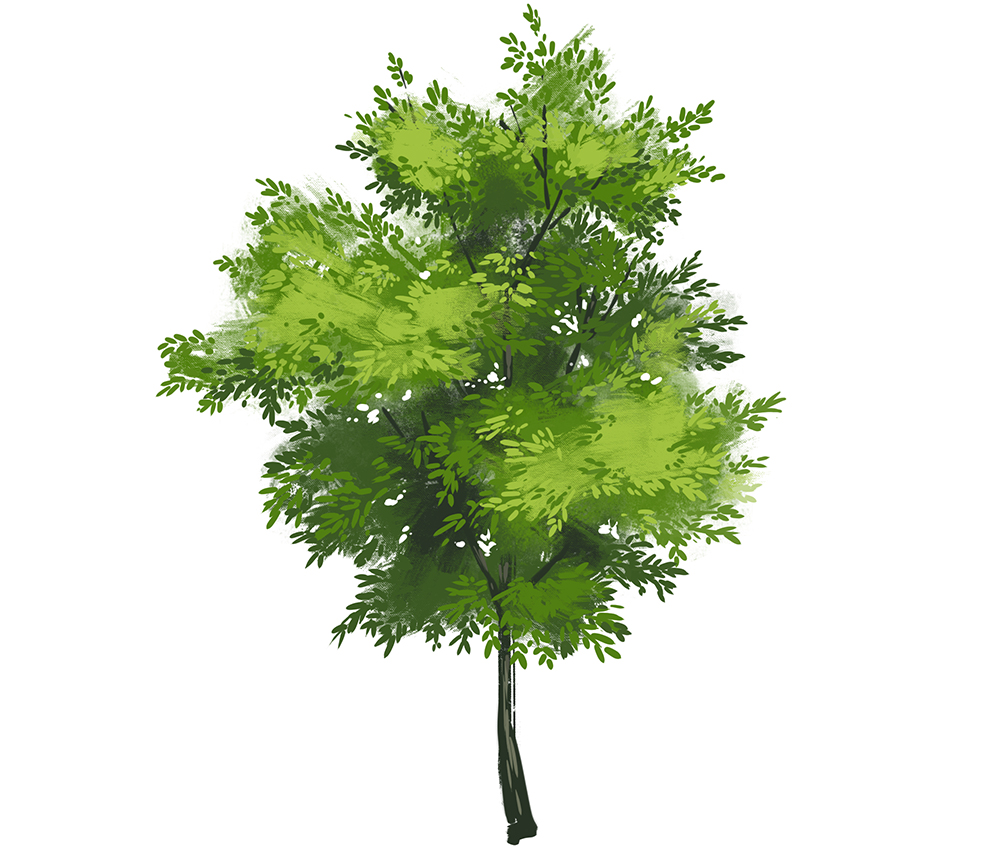
Drawing Leaves
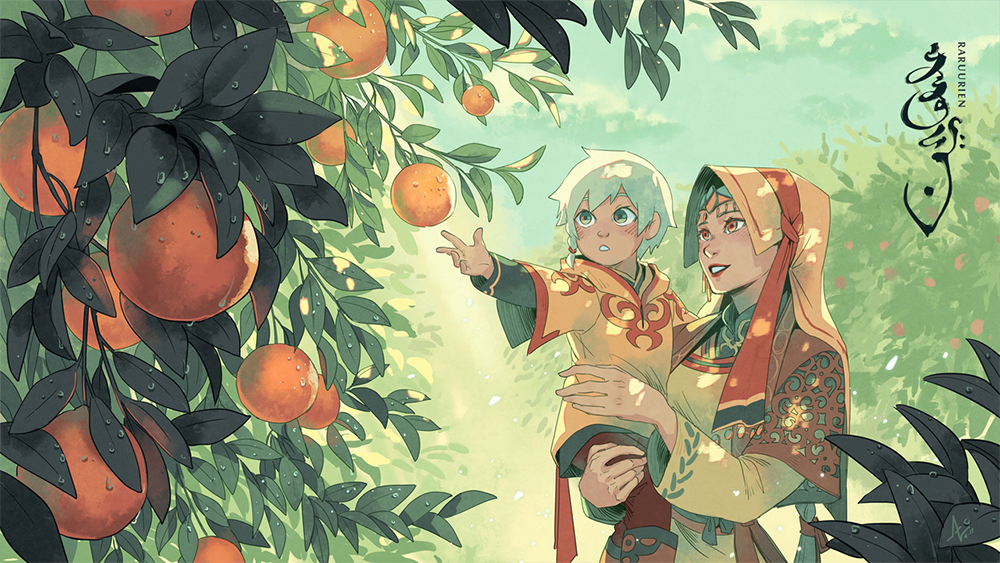
As I mentioned earlier about the depth of field, objects in the foreground are highly detailed so sometimes the leaves in the foreground need to be drawn individually.
To draw individual leaves, I usually start with a center line of action. Below are some examples of where to find these lines.
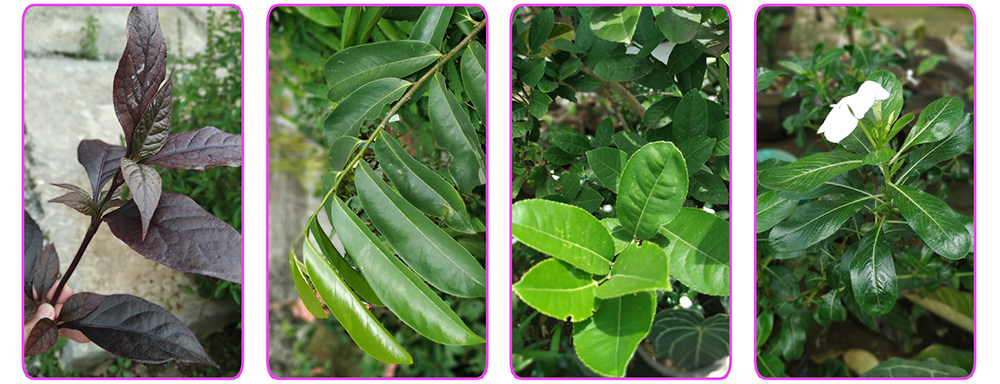
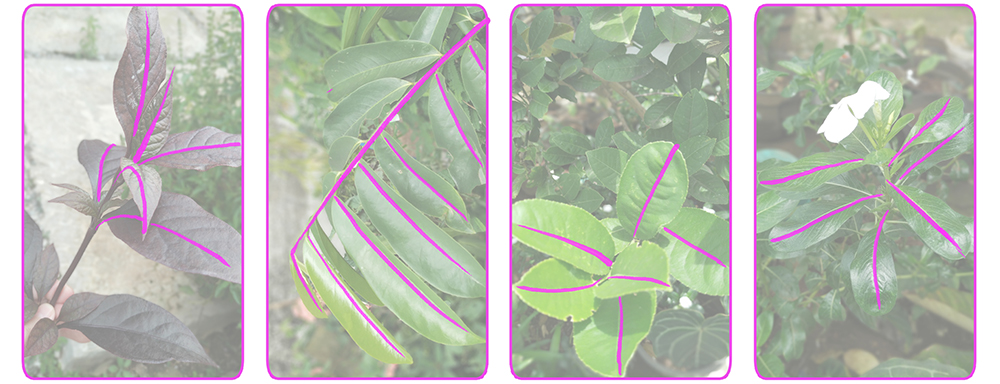
Different leaves have different kinds of shapes, but they usually have a central line just like the spine of the human figure. This line can be used as a line of action to draw a leaf. Below are some leaves in different angles and poses that I drew from just one similar central line.


These lines can also be used when drawing a branch of leaves.
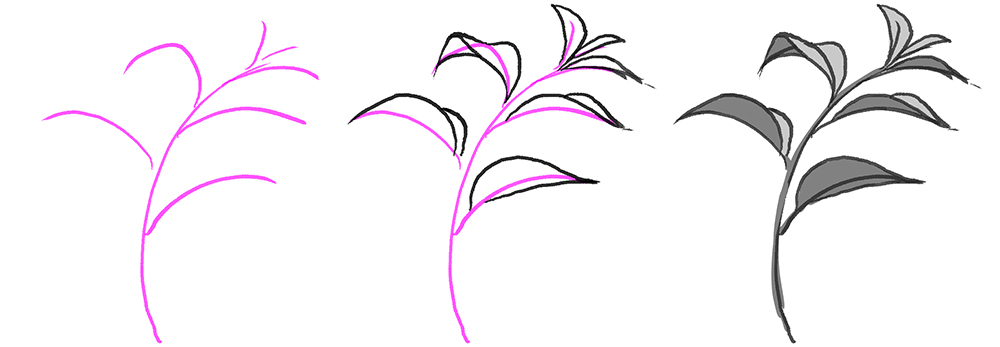
Different plants have different patterns in which the leaves branch out. The image below shows three different patterns on three different plants I found in my mom's garden. Please use these as guides if you want to add more detail and characteristics to the foliage you're drawing. Usually, I would just google the plant's name and study the shape and pattern before drawing it on my canvas.
Studying the pattern directly from an actual branch in front of you will give a better result because you can twirl or rotate it so you won't miss any detail.
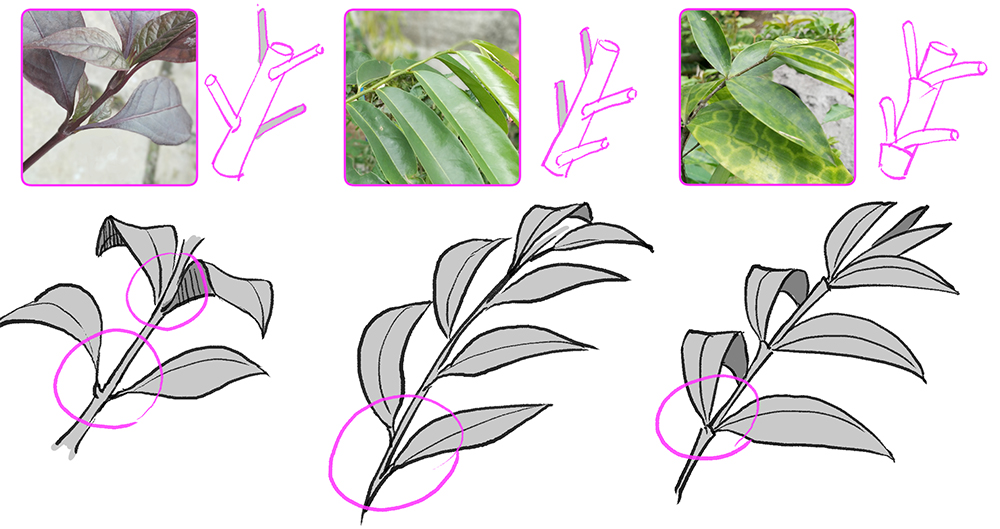
Tips
- Always use references! Avoid drawing from your memory. There are countless types of grass, bushes, and trees. Look for multiple references to create a nice variation and composition.
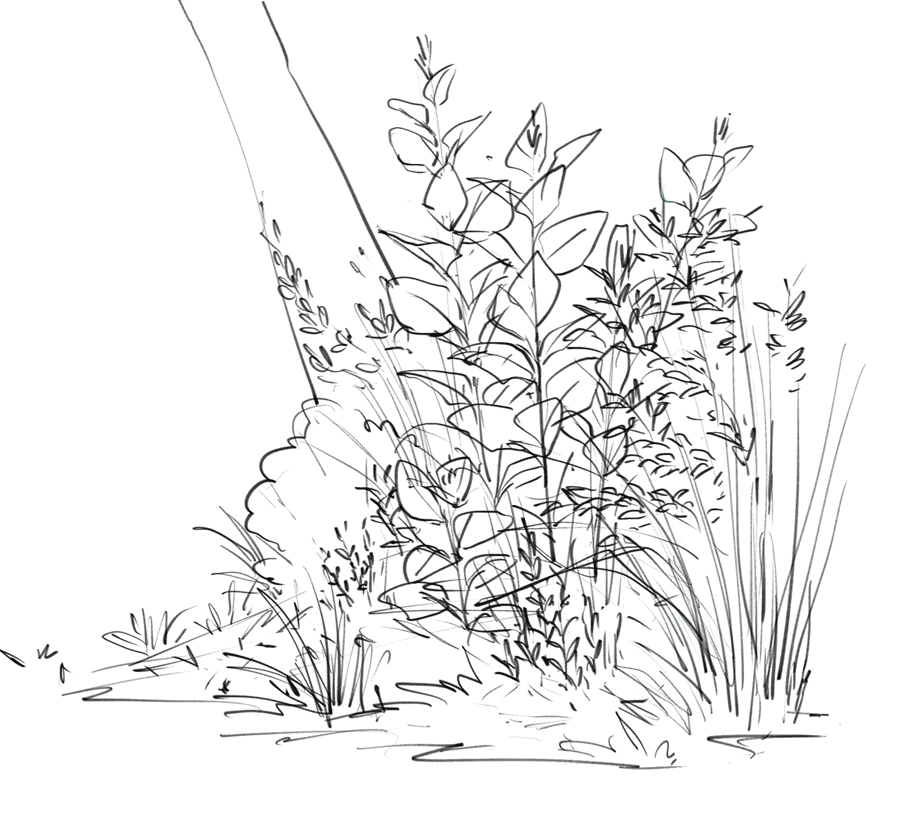
- We don't have to make everything detailed. Add details mainly on the areas you want to focus on. Usually, the focus is located in the foreground or middle ground, but never in the far background.
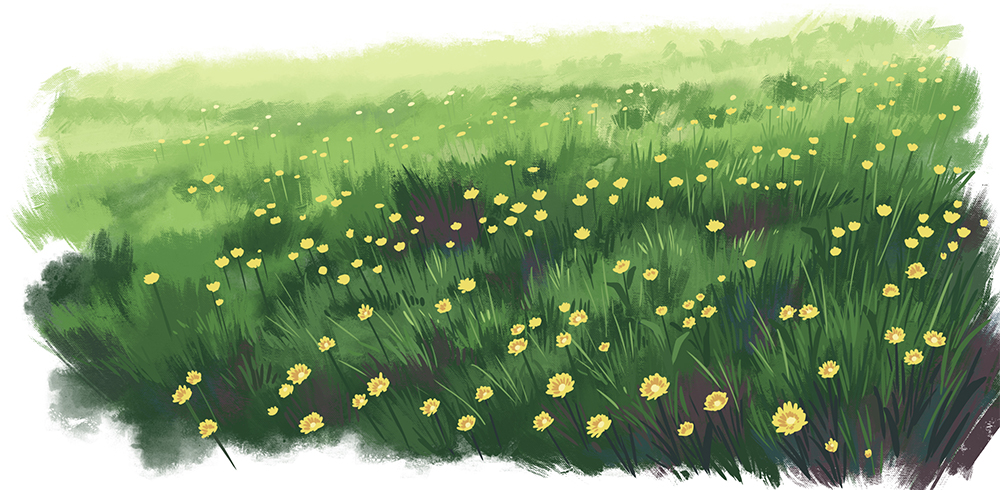
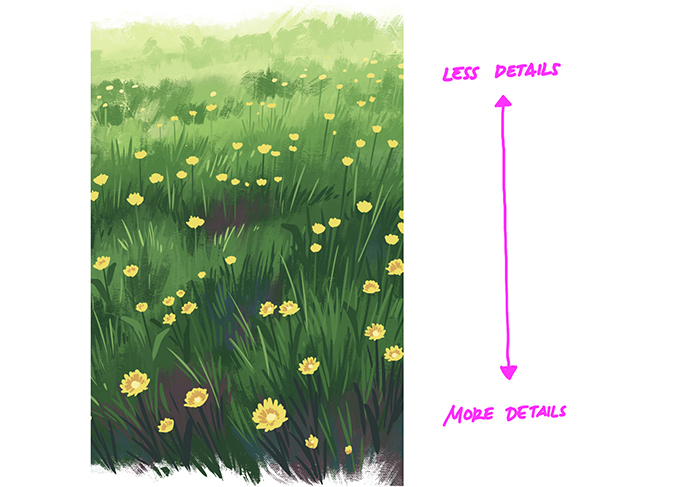
Conclusion
See the big picture first, details later. Use basic shapes for the overall form, and then use directional lines as a guide when adding details.
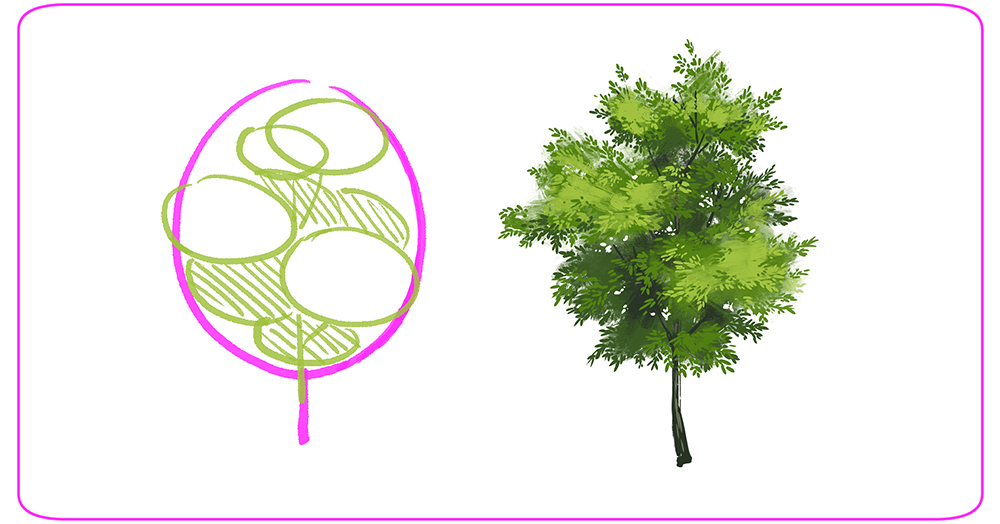
– Ann Maulina
Ann Maulina is a comic artist from Indonesia. Her comics are Raruurien (www.raruurien.com) and Varunair. She also works as a freelance game concept artist at times. She holds a Bachelor's degree in Visual Communication Design, which gives her a high advantage with art and design projects. She enjoys creating art while exploring some dynamic and harmonic colors. You can find her at:
- Twitch
- Artstation
- Patreon
Learn More:
- Guide to Creating Color Schemes
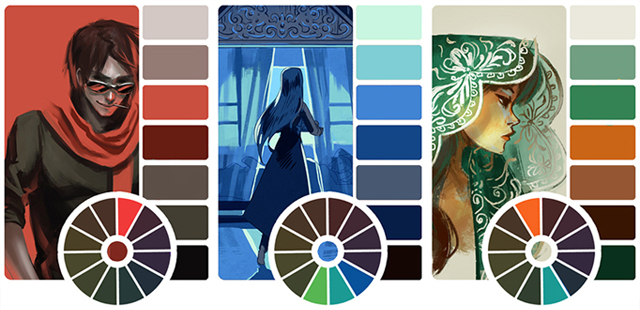
- Drawing the Sky in Various Weathers and Times
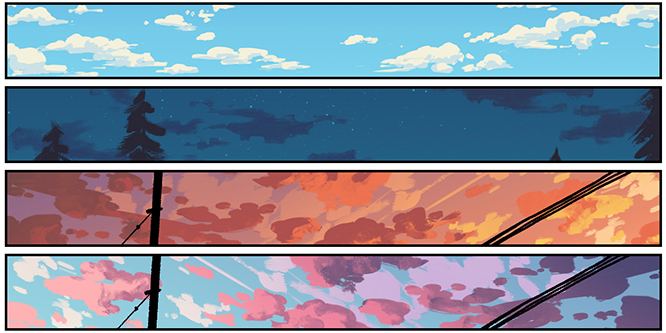
Source: https://www.clipstudio.net/how-to-draw/archives/164235
0 Response to "How to Draw Trees in the Background"
Post a Comment